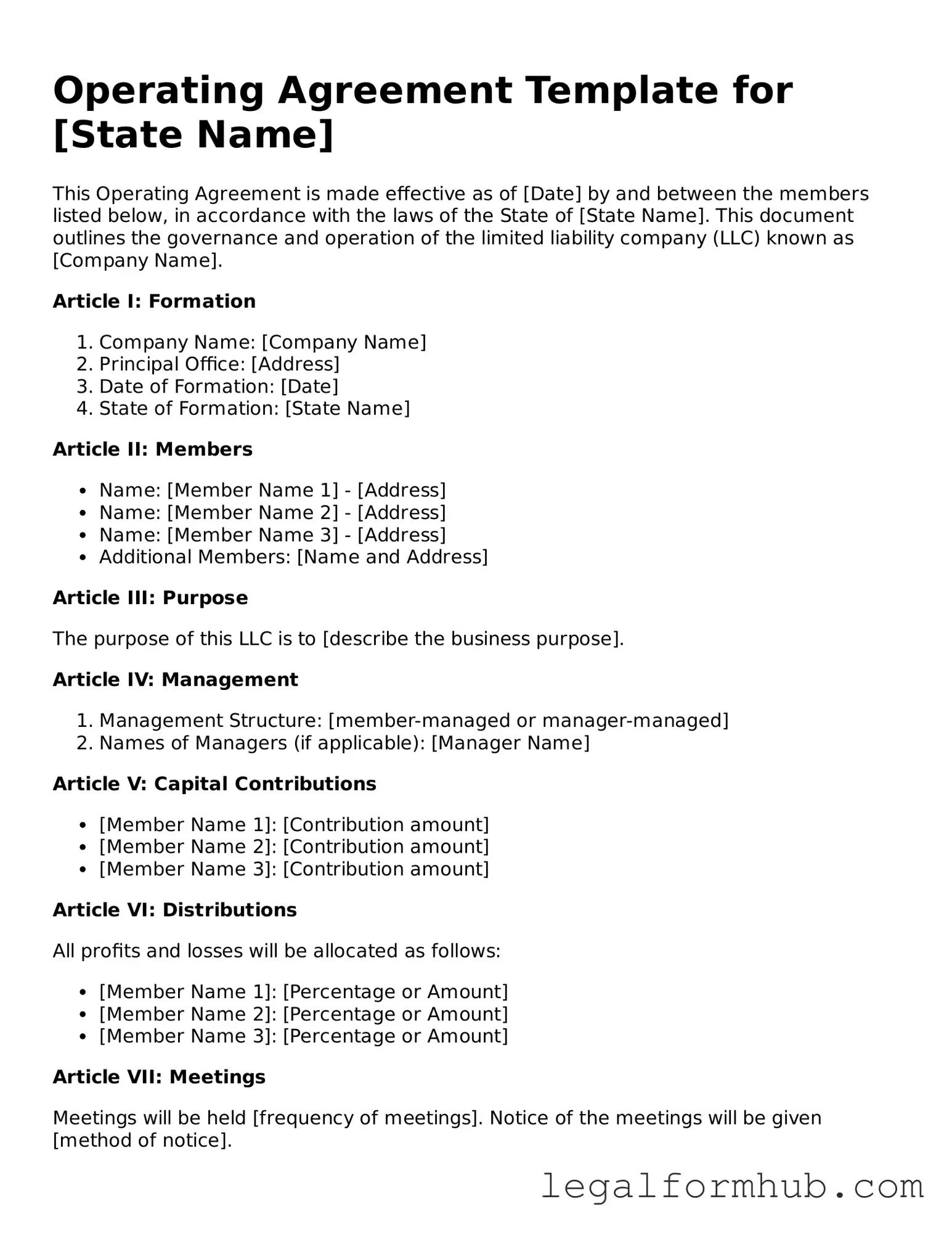The Operating Agreement is often compared to a Partnership Agreement, which outlines the terms and conditions under which partners operate a business together. Both documents serve to clarify the roles, responsibilities, and financial arrangements among the parties involved. While a Partnership Agreement is specific to partnerships, the Operating Agreement serves a similar purpose for limited liability companies (LLCs). Each document helps ensure that all parties are on the same page, reducing the potential for disputes down the line.
Another document similar to the Operating Agreement is the Bylaws of a corporation. Bylaws govern the internal management of a corporation, detailing how decisions are made, how meetings are conducted, and the roles of officers and directors. Just like an Operating Agreement for an LLC, Bylaws help to establish a clear framework for operation and governance, ensuring that all members understand their rights and responsibilities within the corporate structure.
A Shareholder Agreement is also akin to an Operating Agreement, particularly in how it defines the relationship among shareholders in a corporation. This document outlines the rights and obligations of shareholders, including how shares can be bought or sold, and what happens in the event of a shareholder’s departure. Much like an Operating Agreement, a Shareholder Agreement aims to prevent misunderstandings and conflicts among stakeholders by establishing clear guidelines for ownership and management.
The Joint Venture Agreement shares similarities with the Operating Agreement in that it governs the terms of collaboration between two or more parties for a specific project or business endeavor. This document outlines each party's contributions, responsibilities, and profit-sharing arrangements. Just as an Operating Agreement delineates the workings of an LLC, a Joint Venture Agreement provides a structured approach to ensure that all parties understand their roles and the expectations for the venture.
A comprehensive understanding of various legal agreements can greatly enhance the efficiency of business operations. For those looking to manage their invoicing needs with ease, the Fill PDF Forms can be an invaluable resource. By utilizing such tools, businesses can streamline their transactions, ensuring clear communication and proper record-keeping is maintained.
A Non-Disclosure Agreement (NDA) can also be likened to an Operating Agreement in terms of its protective nature. While an Operating Agreement focuses on the operational aspects of a business, an NDA safeguards sensitive information shared between parties. Both documents are essential in establishing trust and confidentiality, ensuring that proprietary information is protected while the business operates smoothly.
Lastly, the Employment Agreement is another document that bears resemblance to the Operating Agreement, as it outlines the relationship between an employer and an employee. This agreement specifies job responsibilities, compensation, and the terms of employment. Similar to how an Operating Agreement clarifies the roles within an LLC, an Employment Agreement ensures that both parties understand their commitments and expectations, fostering a productive work environment.
